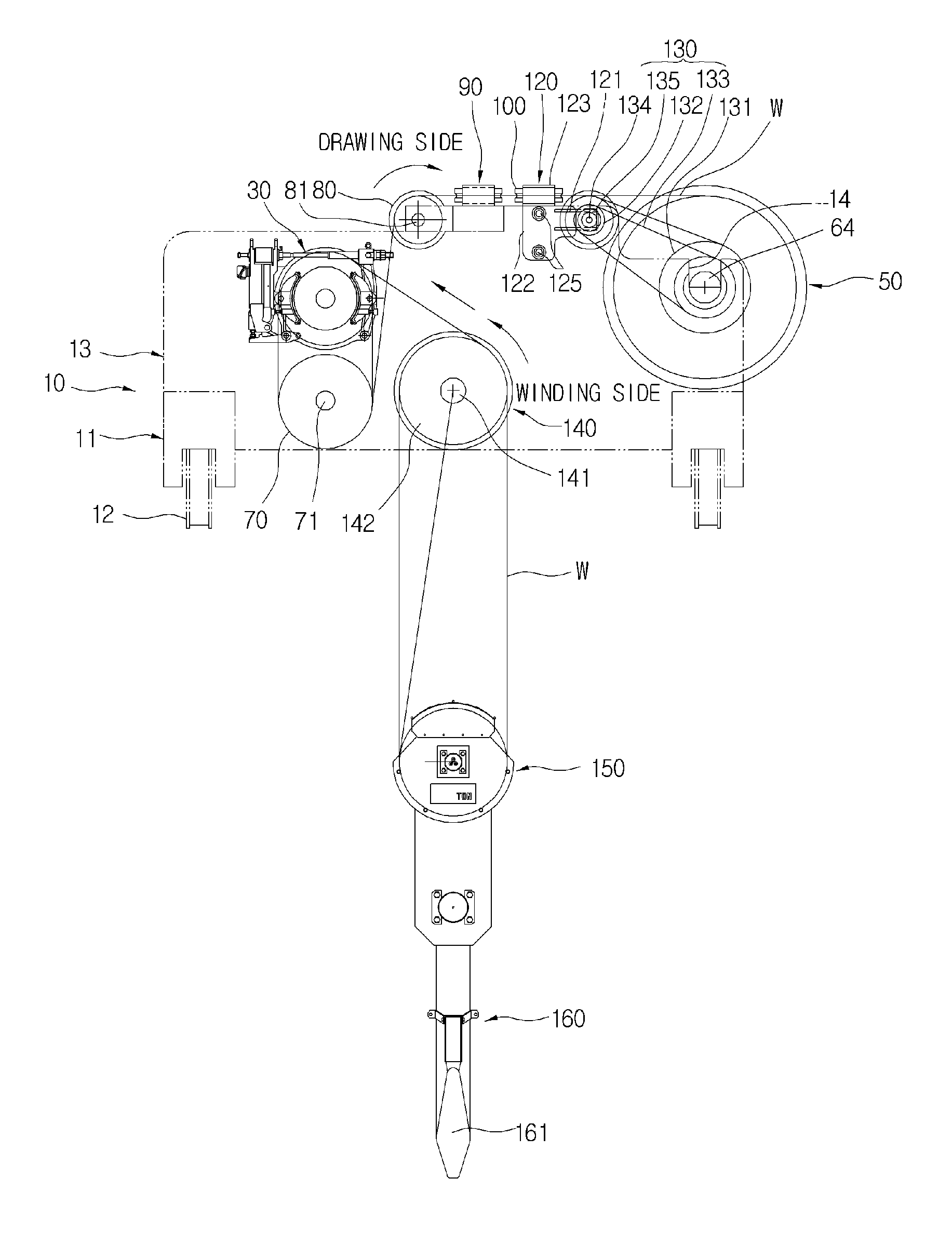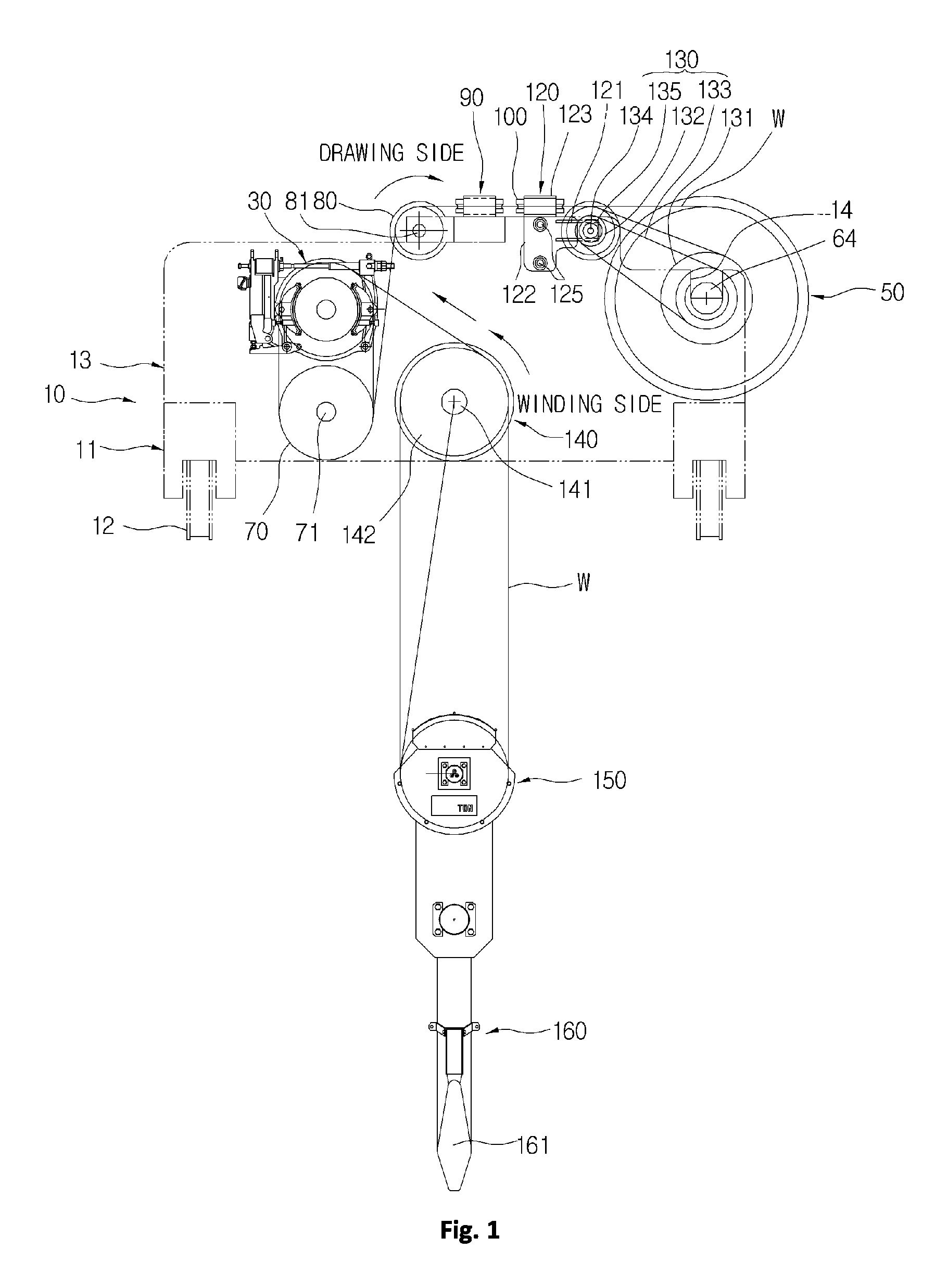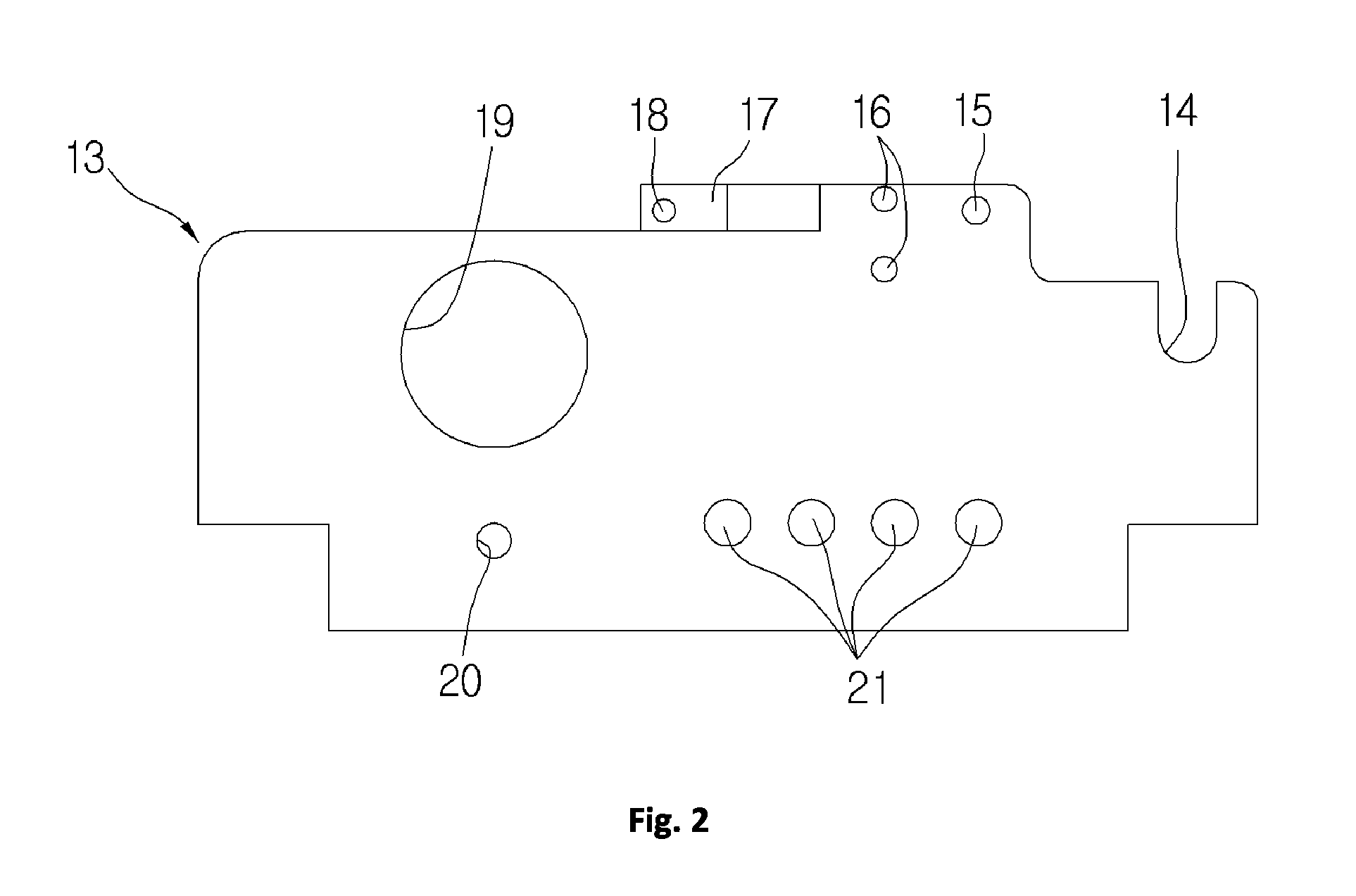Hoist using friction wheel
a technology of friction wheel and hoist, which is applied in the direction of hoisting equipment, load-engaging elements, transportation and packaging, etc., can solve the problems of increasing the total size of the hoist, increasing the power consumption, and the conventional hoist, so as to prevent damage to parts or wires, expand the lifting range of loads, and prevent damage to wires
- Summary
- Abstract
- Description
- Claims
- Application Information
AI Technical Summary
Benefits of technology
Problems solved by technology
Method used
Image
Examples
Embodiment Construction
[0042]Reference will now be made in detail to characteristics and advantages of embodiments of the present invention, examples of which are illustrated in the accompanying drawings.
[0043]FIG. 1 is a schematic front view illustrating a hoist using a friction wheel in accordance with the present invention, FIG. 2 is a front view of a side plate included in the hoist, FIG. 3 is a schematic side view of FIG. 1, FIG. 4 is a schematic plan view of FIG. 1, FIG. 5 is a partial front view illustrating important parts of the present invention, FIG. 6 is a partial side view illustrating a coupling configuration of a horizontal movable guide roller, FIG. 7 is a partial plan view of FIG. 4, FIG. 8 is a schematic partial perspective view illustrating an installation configuration of a horizontal movable guide roller and a vertical movable guide roller, and FIG. 9 is a partial front view illustrating an auxiliary sheave.
[0044]The hoist using a friction wheel in accordance with the present inventio...
PUM
 Login to View More
Login to View More Abstract
Description
Claims
Application Information
 Login to View More
Login to View More - R&D
- Intellectual Property
- Life Sciences
- Materials
- Tech Scout
- Unparalleled Data Quality
- Higher Quality Content
- 60% Fewer Hallucinations
Browse by: Latest US Patents, China's latest patents, Technical Efficacy Thesaurus, Application Domain, Technology Topic, Popular Technical Reports.
© 2025 PatSnap. All rights reserved.Legal|Privacy policy|Modern Slavery Act Transparency Statement|Sitemap|About US| Contact US: help@patsnap.com



